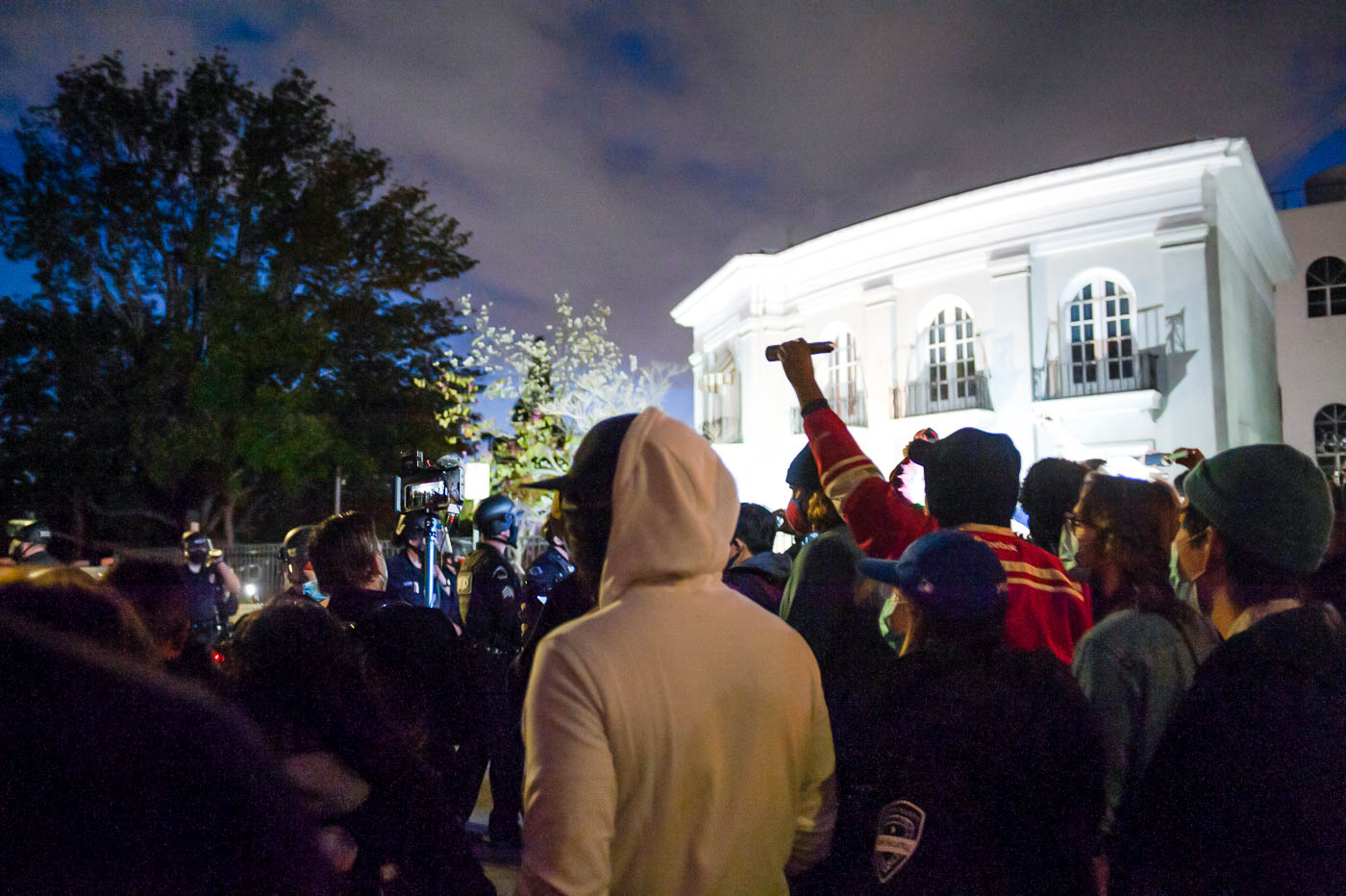UC researchers publish study on how to safely protest amid pandemic

Protesters, public health departments and law enforcement agencies can take several measures to protect themselves from COVID-19, University of California research found. (Chelsea Westman/Daily Bruin)

By Shruti Iyer
April 8, 2021 4:16 p.m.
Wearing masks properly can reduce the risk of contracting COVID-19 while protesting during the ongoing pandemic, UCLA’s activist-in-residence and researchers said.
According to a study published in February led by University of California researchers, a harm reduction approach is a safe way to participate in civil discourse during the COVID-19 pandemic.
David Eisenman, a medicine and public health professor at UCLA and the lead author of the study, said many people, including the general population and researchers, thought the only solution to controlling the spread was to not participate in protests – an abstinence approach. The researchers wanted to see if people could protest safely while also controlling the spread of COVID-19, a harm reduction approach, he said.
Eisenman said public health officials, researchers and faculty who supported the protests received criticism because of the surge in COVID-19 cases.
George Rutherford, an epidemiology and biostatistics professor at UC San Francisco, said the researchers came up with a list of recommendations that are consistent with current national recommendations such as wearing masks, physical distancing, testing and quarantining after participating in a protest.
Rutherford said the researchers drafted the recommendations before there was any guidance for protesting during COVID-19.
The researchers posted the recommendations in UCLA Health’s June 2020 newsletter and to social media.
Jane Nguyen, the 2020 activist-in-residence at the UCLA Asian American Studies Center in partnership with the Luskin Institute on Inequality and Democracy, said she has participated in protests at least once a week.
Nguyen said that although many protesters wear masks, social distancing is difficult to achieve because of how crowded protests are.
“Safety is really important to all the organizers who organize these protests, so we make sure that everyone is wearing a mask,” Nguyen said. “Social distancing is important but often not very possible, especially if it’s crowded. Most protests have a lot of people, so social distancing isn’t always possible, but we at least tried to wear masks.”
Dorothy Wiley, a professor at the UCLA School of Nursing, said the researchers also recommended the use of hand sanitizers.
“Our main goal was to avoid any kind of super spread because people attending these protests were deeply troubled by so much (happening politically),” Wiley said.
Wiley said researchers asked public health departments to make testing available and easy to access if people have been attending protests.
Eisenman said the researchers were one of the first few who addressed law enforcement’s role in the spread of COVID-19. Law enforcement officials were detaining people in close quarters without masks, and detainees were coughing from being pepper-sprayed, he said.
“It was clearly a setup for the spread of COVID-19,” Eisenman said. “You have law enforcement exacerbating the situation and … law enforcement themselves were getting infected.”
The researchers recommended that law enforcement detain people outdoors and maintain social distancing. They also recommended avoiding the use of substances like pepper spray that cause coughing and sneezing and not taking masks off detained people, Eisenman said.
Wiley said law enforcement should use alternatives, such as issuing citations and summons to court to protect people from exposure to the virus.
Nguyen also said police officers often wear masks incorrectly and are vectors for the spread of COVID-19.
“(Police officers) would wear it, their masks, underneath their nose,” Nguyen said. “It’s the police officers who do not care about other people’s public health and safety, and they violate mask-wearing protocols, among other violence that police officers do.”
Nguyen added she worries that police officers who violate mask protocols could create a safety risk for protesters.
“I think continuing to be able to protest is so immensely important, especially during the time of social unrest and massive inequality,” Nguyen said. “I guess the one point that I’d like to make is that the city of LA needs to do a much better job respecting the rights of protesters.”


